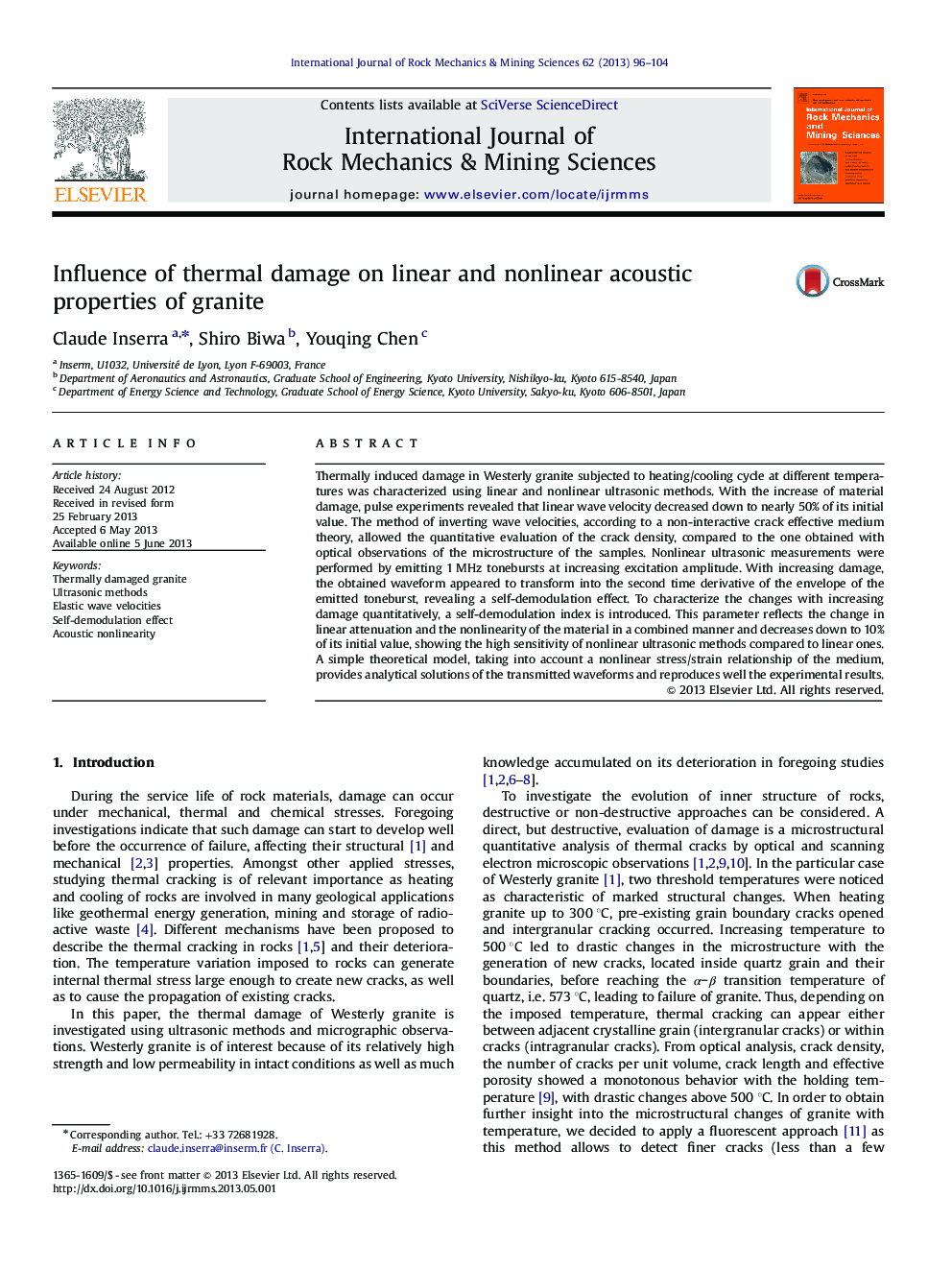| Article ID | Journal | Published Year | Pages | File Type |
|---|---|---|---|---|
| 809210 | International Journal of Rock Mechanics and Mining Sciences | 2013 | 9 Pages |
•Linear and nonlinear ultrasonic probing was compared for quantifying thermal damage.•Use of nonlinear ultrasonic methods revealed a self-demodulation effect.•A new damage indicator exhibiting high sensitivity to thermal damage is introduced.•A theoretical model is developed and reproduces well the experimental results.
Thermally induced damage in Westerly granite subjected to heating/cooling cycle at different temperatures was characterized using linear and nonlinear ultrasonic methods. With the increase of material damage, pulse experiments revealed that linear wave velocity decreased down to nearly 50% of its initial value. The method of inverting wave velocities, according to a non-interactive crack effective medium theory, allowed the quantitative evaluation of the crack density, compared to the one obtained with optical observations of the microstructure of the samples. Nonlinear ultrasonic measurements were performed by emitting 1 MHz tonebursts at increasing excitation amplitude. With increasing damage, the obtained waveform appeared to transform into the second time derivative of the envelope of the emitted toneburst, revealing a self-demodulation effect. To characterize the changes with increasing damage quantitatively, a self-demodulation index is introduced. This parameter reflects the change in linear attenuation and the nonlinearity of the material in a combined manner and decreases down to 10% of its initial value, showing the high sensitivity of nonlinear ultrasonic methods compared to linear ones. A simple theoretical model, taking into account a nonlinear stress/strain relationship of the medium, provides analytical solutions of the transmitted waveforms and reproduces well the experimental results.
